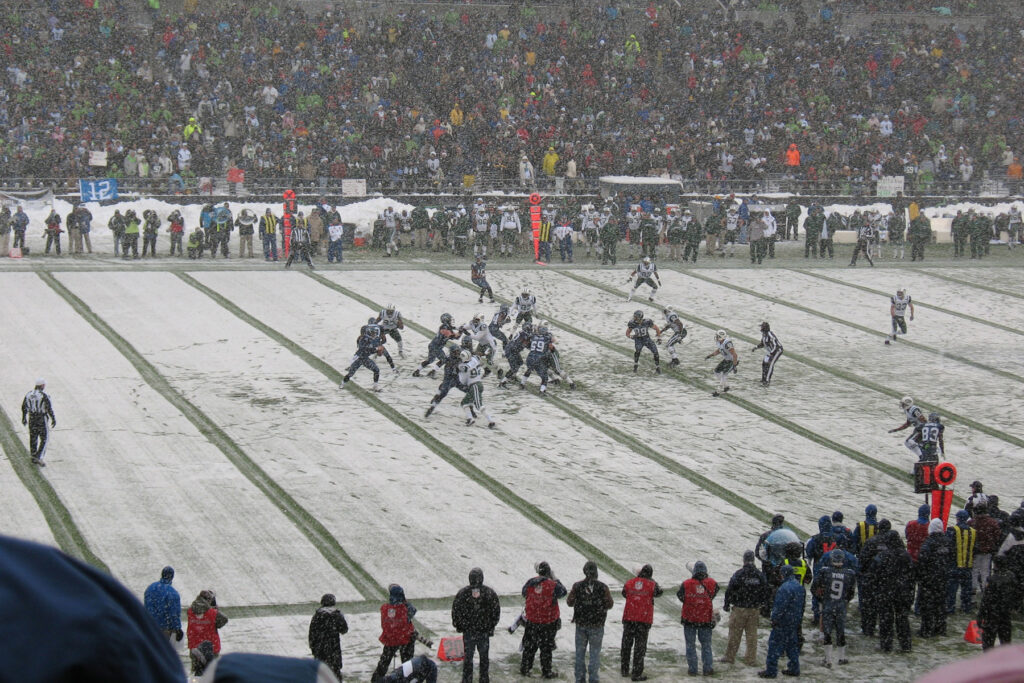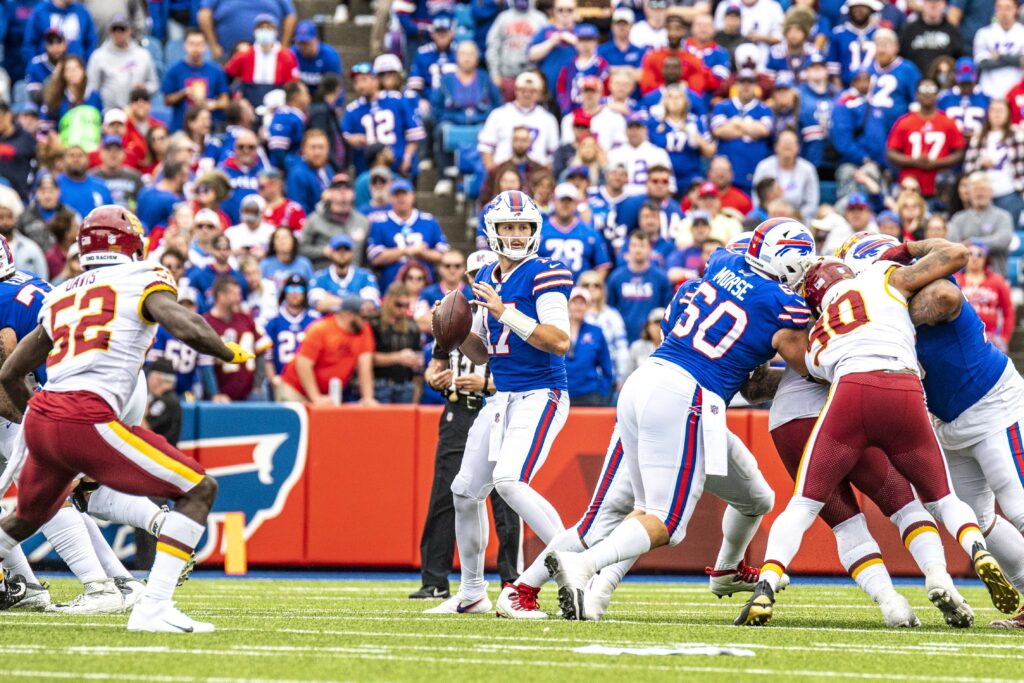Like many professional sports teams in the world, NFL teams often travel to different places in the United States so that they could play games on their opponents’ fields. But constant traveling can be a pain for football players, especially when you consider that these athletes take hard hits on a regular basis. Traveling impacts the bodies of these players, and that’s an interesting topic to look at when it comes to what NFL athletes go through on a regular basis.
How NFL Teams Travel Before Games
Extensive travel is part and parcel of what NFL players go through on a regular basis because they have to go to different cities all over America to play games there. In fact, NFL teams travel an average of 12,000 miles per season.
In most cases, NFL teams travel by chartered flights scheduled sometime before a scheduled game. The New England Patriots are famous for having their own private plane for traveling to away games in different cities. But in most cases, teams charter flights to get to their destinations.

There are some teams that also travel by bus or train, especially if there isn’t a significant distance between locations. For example, if it is possible for the team to get to an away game in just a few hours on the road, it is likely that the team is going to use the team bus instead of chartering a flight.
Examples of routes where train is used:
- The New York Giants and New York Jets vs. the New England Patriots.
- The Chicago Bears and Green Bay Packers when scheduled to play each other at Lambeau Field.
- The San Francisco 49ers and Oakland Raiders when scheduled to play each other at Levi’s Stadium.
When traveling, teams usually have to get to their destination at least 18 hours before kickoff so that they can have enough time to settle into their hotel, rest a few hours, eat a decent meal, and have a practice.
However, the team’s equipment is usually transported separately from the players, often shipped beforehand by truck or plane. The equipment usually gets there one or two days before the team arrives so that the equipment crew can set things up beforehand.
Teams have their own travel department that works tirelessly to make sure that everything related to the team’s travel schedule has already been arranged after the league releases the schedule for the entire season. The travel department takes into consideration a lot of different factors, including the distance of the trip, the weather conditions, and the time of the game. By arranging the travel schedule early on, the travel department would be able to make things easier for the players, who only have to get on the plane or the bus instead of actually worrying about a lot of travel-related tasks.
But because there can be unforeseen circumstances that can affect the pre-arranged travel schedule, the schedule itself can change. The team’s travel department now has to work to find an alternative way to get the team to its destination on time.
Relevant NFL team travel department information:
- Most travel departments have about 10 people.
- Specific positions within the department include
- Travel manager – The one responsible for planning and coordinating the entire travel schedule.
- Equipment manager – The one responsible for transporting the team’s equipment.
- Medical staff – The ones responsible for any medical care needed during travel.
- Security manager – The one responsible for the security of the team during travel.
Other relevant information:
- The team’s chartered flight includes the best amenities available, including a sleeping area, a dining area, and a conference room to make things easier for the players and the coaching staff.
- In most cases, teams charter Boeing 737 or Airbus A320 airplanes. But there are also cases where larger aircrafts, such as the Boeing 757 and the Airbus A330 are used.
- The team equipment is transported in climate-controlled trucks or planes to minimize damage and wear and tear.
- The travel department is also responsible for arranging local transportation for the team.
Common challenges for NFL teams when traveling

- Time difference: Teams often travel across multiple time zones, making it hard for their bodies to adjust to new sleep schedules.
- Sudden weather changes: Inclement weather can affect the flight schedules of teams. This will demand the travel schedule to make immediate arrangements to get the team to its destination.
- Different weather conditions: Different places in the US have different weather conditions that certain players may not be used to. For example, it can be difficult for a Florida-based team to adjust to a city that’s up in the north, where the weather is usually a lot cooler. Rain and other similar weather conditions can affect the travel itself.
- Jet lag: When traveling across multiple time zones, jet lag can affect the sleep schedules and the bodies of different NFL players.
Security measures for NFL teams during travel
Traveling to other cities can be dangerous to NFL teams, especially due to hostile fans. Here are some steps taken to ensure the safety of the team during travel:
- Traveling with a security team.
- Chartering flights that aren’t available to the general public.
- Staying in hotels that aren’t too close to the stadium.
- Hiring private security to provide protection.
- Keeping travel schedules confidential from the public.
Examples of fans affecting travel schedule:
- In 2017, the New England Patriots changed hotels after opposing fans harassed them.
- In 2018, the Carolina Panthers canceled a team meeting due to hostile actions from opposing fans.
- In 2019, the Philadelphia Eagles delayed their departure from the airport when opposing fans blocked the team’s bus.
Remedies for common issues and challenges during travel
Medical issues:
- Team doctors may advise players to adjust their sleep schedule beforehand to make the transition to a different time zone easier.
- Team doctors may prescribe medication to help with jet lag. This may include:
- Modafinil (Provigil)
- Armodafinil (Nuvigil)
- Melatonin
- Diphenhydramine (Benadryl)
- When there are changes in weather conditions, players usually dress appropriately and keep their bodies hydrated in case of extreme changes in temperatures.
Examples of sudden changes in weather conditions:
- In 2017, the New York Giants and Philadelphia Eagles game was delayed due to snow.
- In 2018, the game between the Green Bay Packers and the Minnesota Vikings had to be delayed by an hour due to rain.
- In 2019, the Baltimore Ravens and the Cincinnati Bengals game was affected by threat of lightning and had to be delayed by half an hour.
When there is delay:
- The NFL rulebook allows a game to be delayed due to weather conditions if the field is rendered unplayable or if the visibility conditions are poor. (Rule 15, Section 3, Article 1 states that “A game may be delayed for weather conditions if the field is unplayable or if the visibility is poor.”)
- Threat of lightning can also delay a game.
- In the event of a delay the game should be restarted as soon as possible, especially if the conditions improve.



